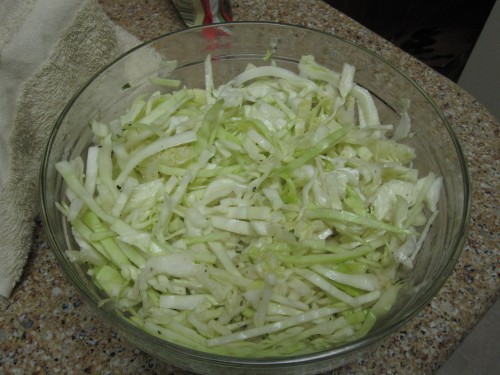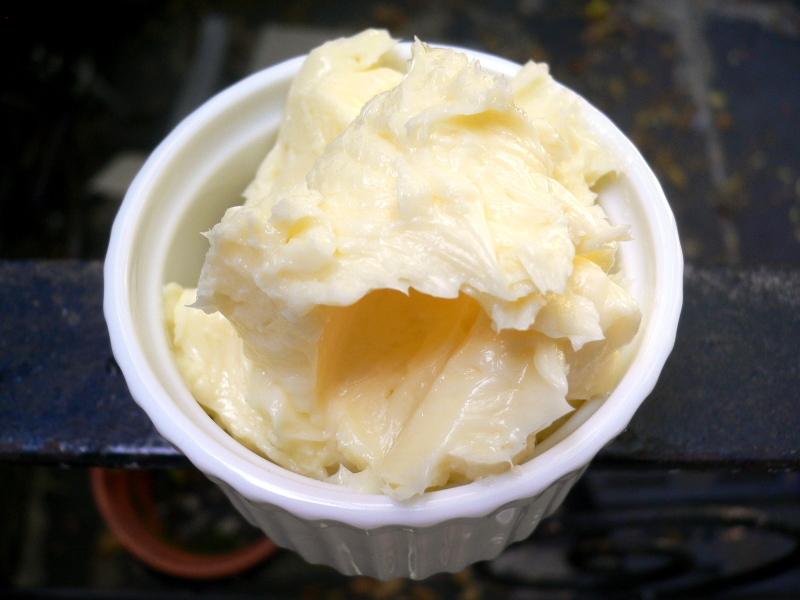Summer’s coming to an end, so stock up on your berries and preserve them any way you could. Our favorite way to do this is to make jam. Though freezing is probably easier, cooking and preserving the berries is a very flavorful way to enjoy our summer produce all year long. It also makes a really nice gift!
(Berries actually freeze quite well. Make sure to clean and dry them, and then store them in a zip top bag. Make sure to suck all the air out and seal it tight so that the berries don’t get freezer burned. If you want to freeze strawberries, hull them before freezing.)
Last year we made raspberry jam with raspberries we picked ourselves from a local farm. We also made strawberry-fig jam, inspired by my backyard fig tree. This summer we decided to make more mixed fruit jams, and the apricot-nectarine turned out really orange and delicious. This raspberry-strawberry-blueberry jam is an amazing deep purplish pink color. We can’t decide if it tastes better than it looks or looks better than it tastes.
Oh, we took all the photos with my new(ish) Droid-X. Pretty cool, huh?
All jam making directions and tips are from pickyourown.org and the package of pectin.
Ingredients:
- 10 cups of unprepared berries, we used 2 pints of blueberries, 1 1/2 pints of strawberries, and 3 (1-cup) packages of raspberries (when you mash these, you’ll have about 6 cups of fruit)
- Juice and zest of two lemons
- 6 cups white sugar
- 1 package Sure Jell pectin (the yellow package)
Equipment:
- 1 large pot
- 2 large bowls (one for berries, one for sugar)
- Measuring cups
- 1 large pot
- Potato masher
- Mixing spoon
- Cup of ice water and teaspoon (to test jam)
For canning:
- Mason jars with tops and rings
- Canning funnel
- Magnetic lid lifter
- Jar tongs
- Small pot for boiling the lids
- Pot for boiling prepared jars
- Dishwasher or large pot for sterilizing jars
Instructions:
If you are canning, make sure to sterilize the jars. If using a dishwasher, run it without soap. If using a pot, fill the pot with water and the jars and boil. Do not touch the inside of the jars (that’s why you have the jar tongs), because that will introduce bacteria to the sterilized jars and could result in icky jam! Do this now so it will be ready when you are. Boil the lids, too.
1. Wash the fruit. Sort through it to make sure you have no bad berries or stems, etc.
2. Chop the strawberries.
3. Add the fruit to a bowl and make sure you have 10 cups. Mash.
4. Measure out the sugar. Set aside 1/4 cup of sugar and mix with the pectin. This will allow the pectin to incorporate into the fruit better, and make sure you don’t have lumpy jam.
5. Add fruit to large pot and cook over high heat, stirring constantly. When it comes to a full rolling boiling, meaning it doesn’t stop bubbling even when you stir, time one minute. Add the pectin and stir until it dissolves.
6. While still stirring, add the sugar, a cupful at a time, until it is all incorporated.
7. Continue stirring constantly until the mixture comes to a rolling boil again. After one minute, test the jam to make sure it sets.
8. Take a spoonful of jam and dip it in a cup of ice water. If it gels, it’s ready to be jarred. If not, boil for another minute and test again.
9. Use a ladle or big spoon to fill the sterilized jars. Leave about 1/2 inch of space at the top.
10. Use the magnetic lid lifter to cover, making sure to clean the jars before placing the tops on. Screw on the lid.
11. After all the jam is canned, place in about 2 inches of water and boil for 5 minutes (or more, depending on altitude). You will hear the tops POP, either while they are boiling or after when they are cooling. If you don’t hear the pop after a while, try boiling again or just put the jam in the fridge and use it right away. It will still be good.
12. The boiled jars should last about a year (’til next summer).
This recipe made 10 6-oz jars of jam.

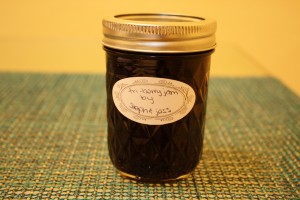
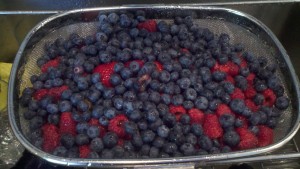

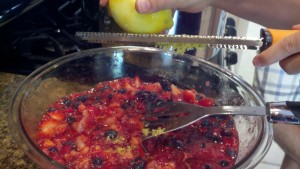
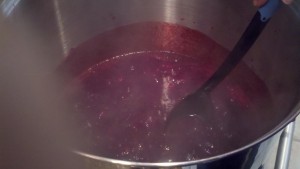
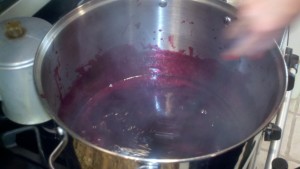
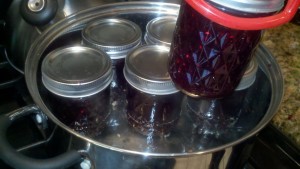
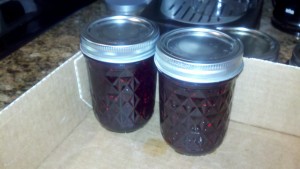
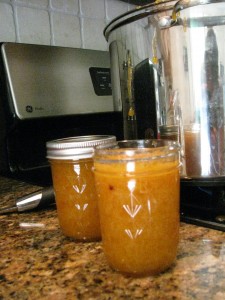
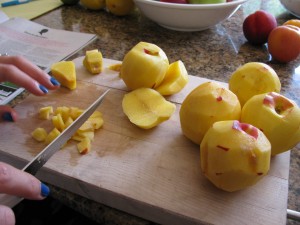
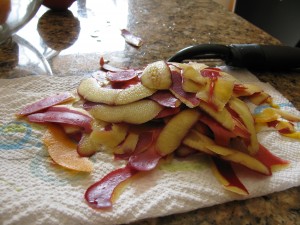
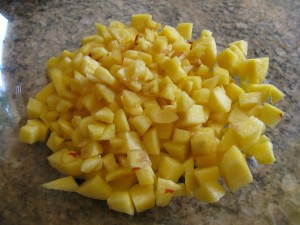
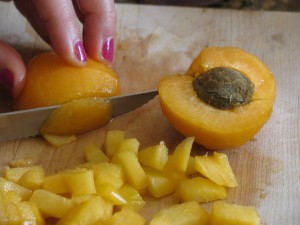
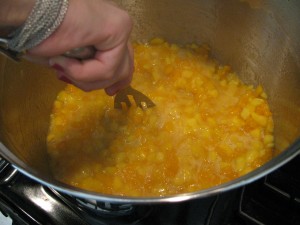
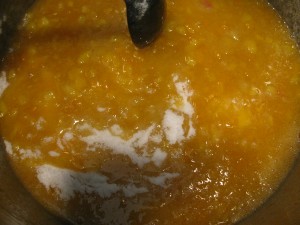
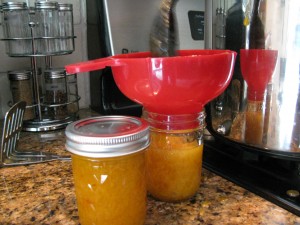
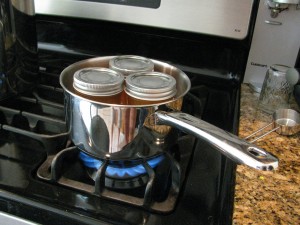
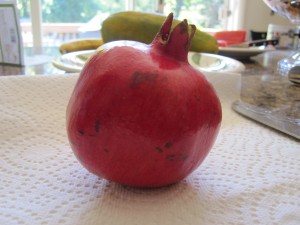
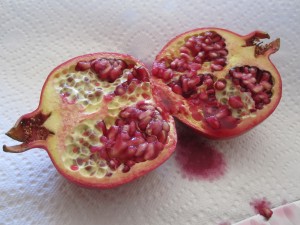
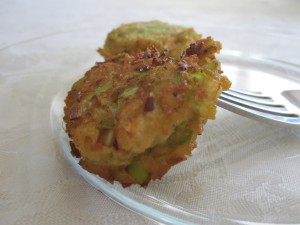
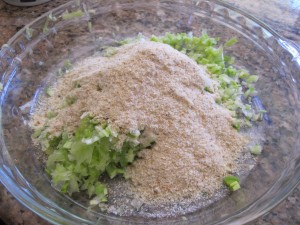
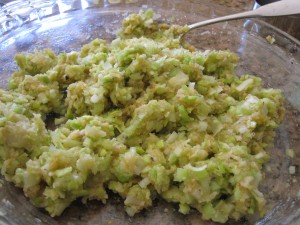
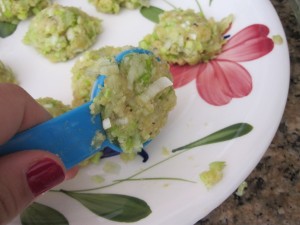
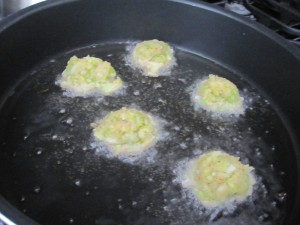
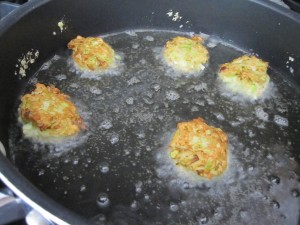
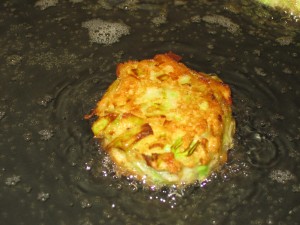
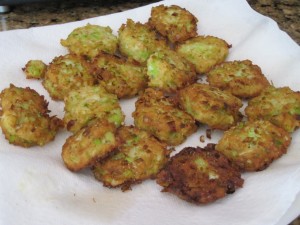




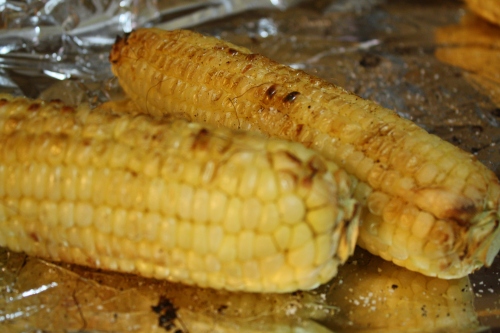
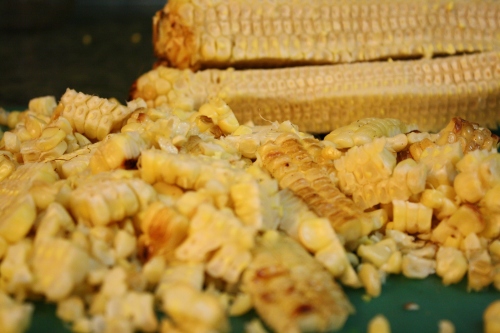
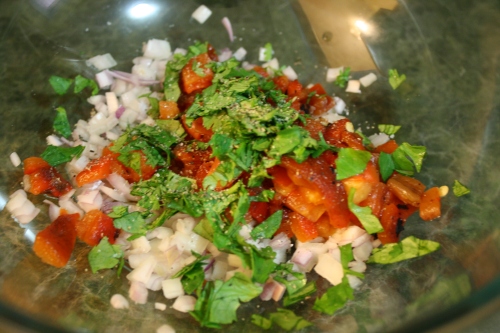
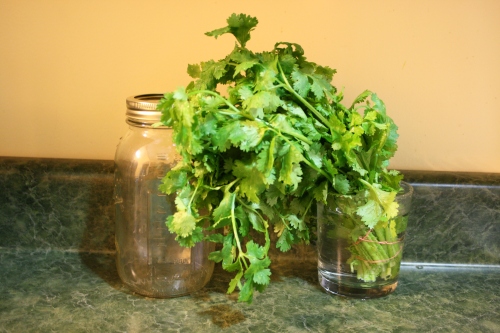
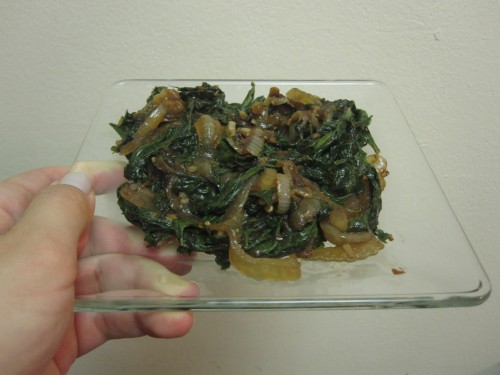
 *
*